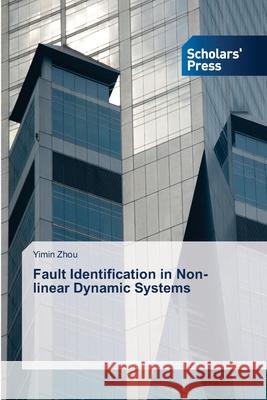Fault Identification in Non-linear Dynamic Systems » książka
Fault Identification in Non-linear Dynamic Systems
ISBN-13: 9783639718942 / Angielski / Miękka / 2014 / 208 str.
There has been considerable interest in fault detection and identification recently due to the increasing complexity of automation processes. A more suitable strategy of using knowledge-based techniques instead of traditional linearization techniques is used to produce a model of a non-linear system. A method to generate the training data is presented. A fuzzy relational sliding mode observer (FRSMO) and proportional integral observer (FRPIO) are proposed to estimate the magnitude of incipient faults in information-poor and non-linear systems. In the fuzzy PIO, fault size can be obtained from the error passing the PI feedback compensation. In the fuzzy SMO, the equivalent injection is used to compensate for the fault thus obtaining the fault magnitude. To reduce modelling errors, an on-line learning fault identification scheme is used to update the model and identify the fault in a periodical mode with different time intervals during the whole procedure. The performance of the proposed methods is evaluated using a cooling-coil subsystem of an air-conditioning plant to identify the typical actuator fault and flow reduction fault in a simulation environment.
There has been considerable interest in fault detection and identification recently due to the increasing complexity of automation processes. A more suitable strategy of using knowledge-based techniques instead of traditional linearization techniques is used to produce a model of a non-linear system. A method to generate the training data is presented. A fuzzy relational sliding mode observer (FRSMO) and proportional integral observer (FRPIO) are proposed to estimate the magnitude of incipient faults in information-poor and non-linear systems. In the fuzzy PIO, fault size can be obtained from the error passing the PI feedback compensation. In the fuzzy SMO, the equivalent injection is used to compensate for the fault thus obtaining the fault magnitude. To reduce modelling errors, an on-line learning fault identification scheme is used to update the model and identify the fault in a periodical mode with different time intervals during the whole procedure. The performance of the proposed methods is evaluated using a cooling-coil subsystem of an air-conditioning plant to identify the typical actuator fault and flow reduction fault in a simulation environment.











